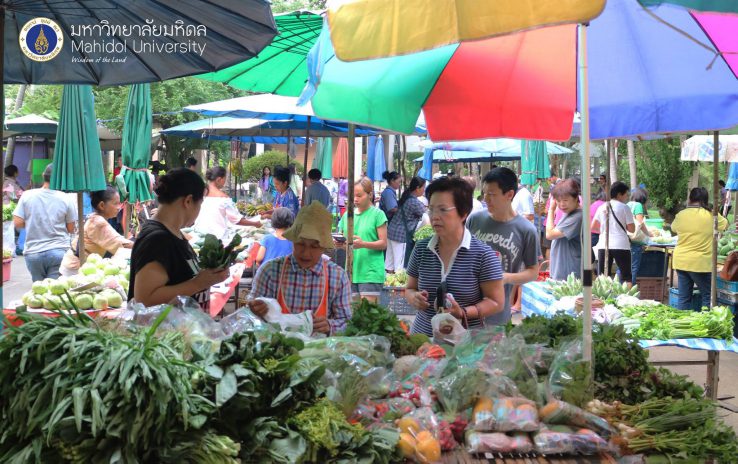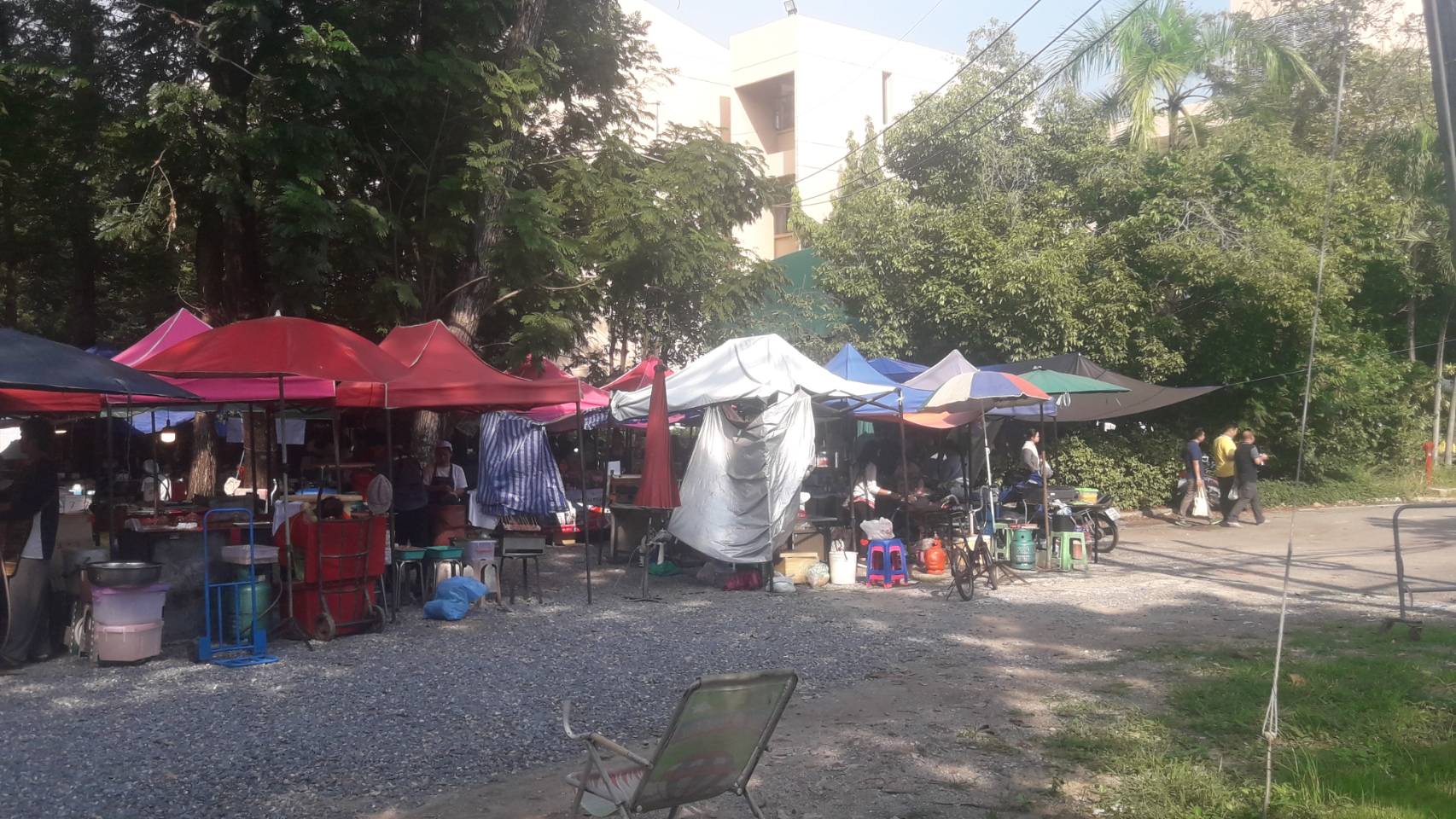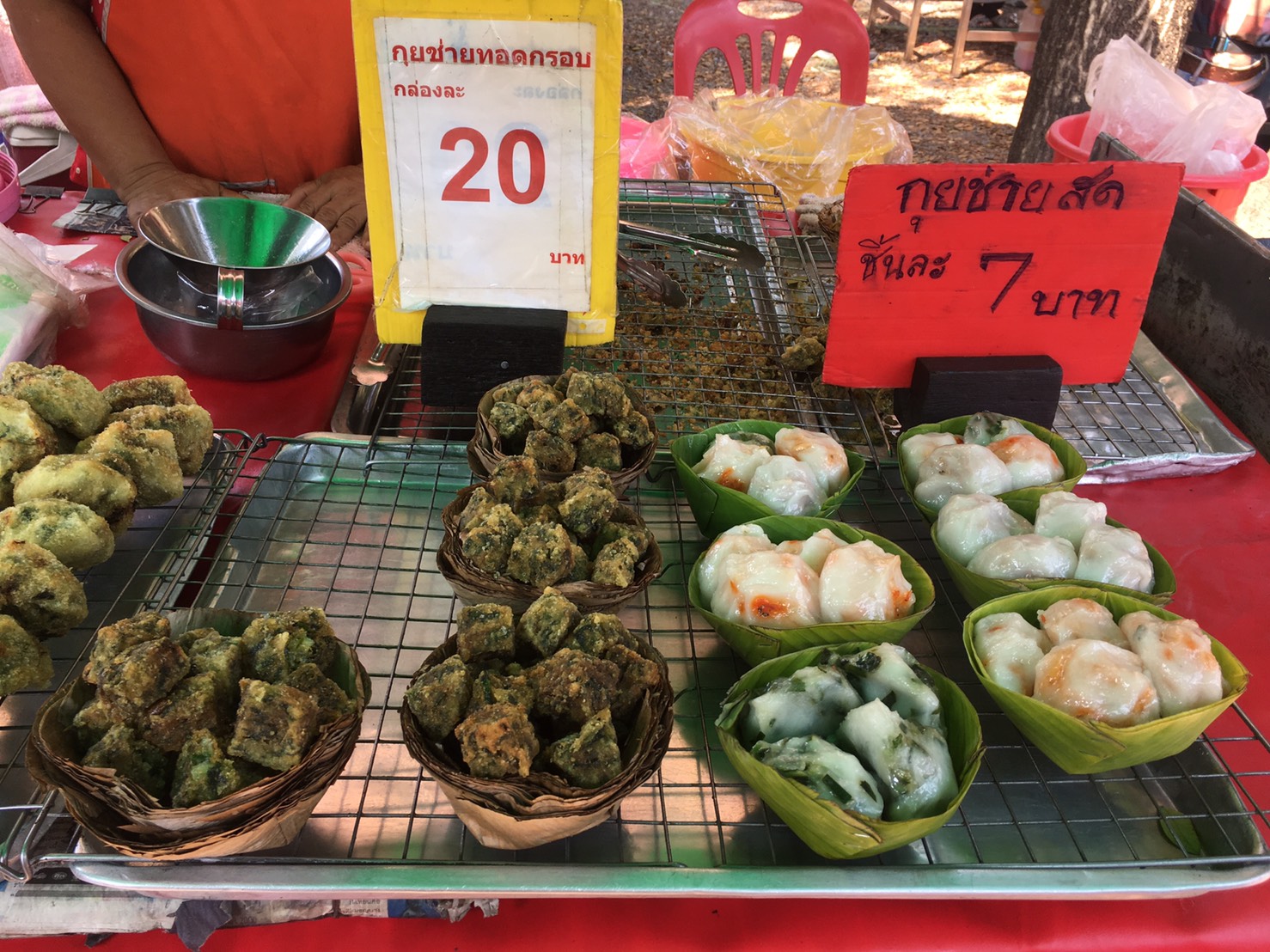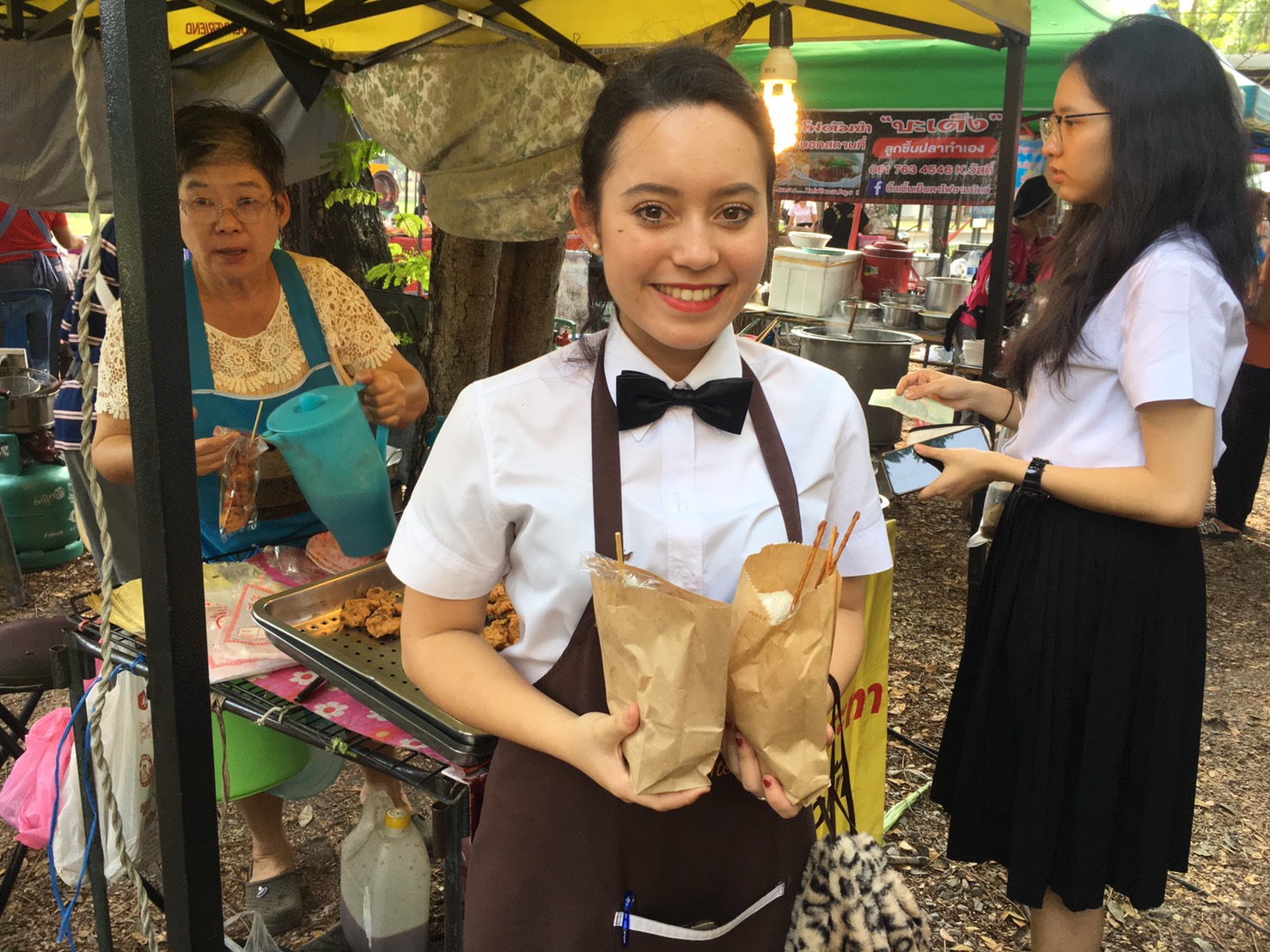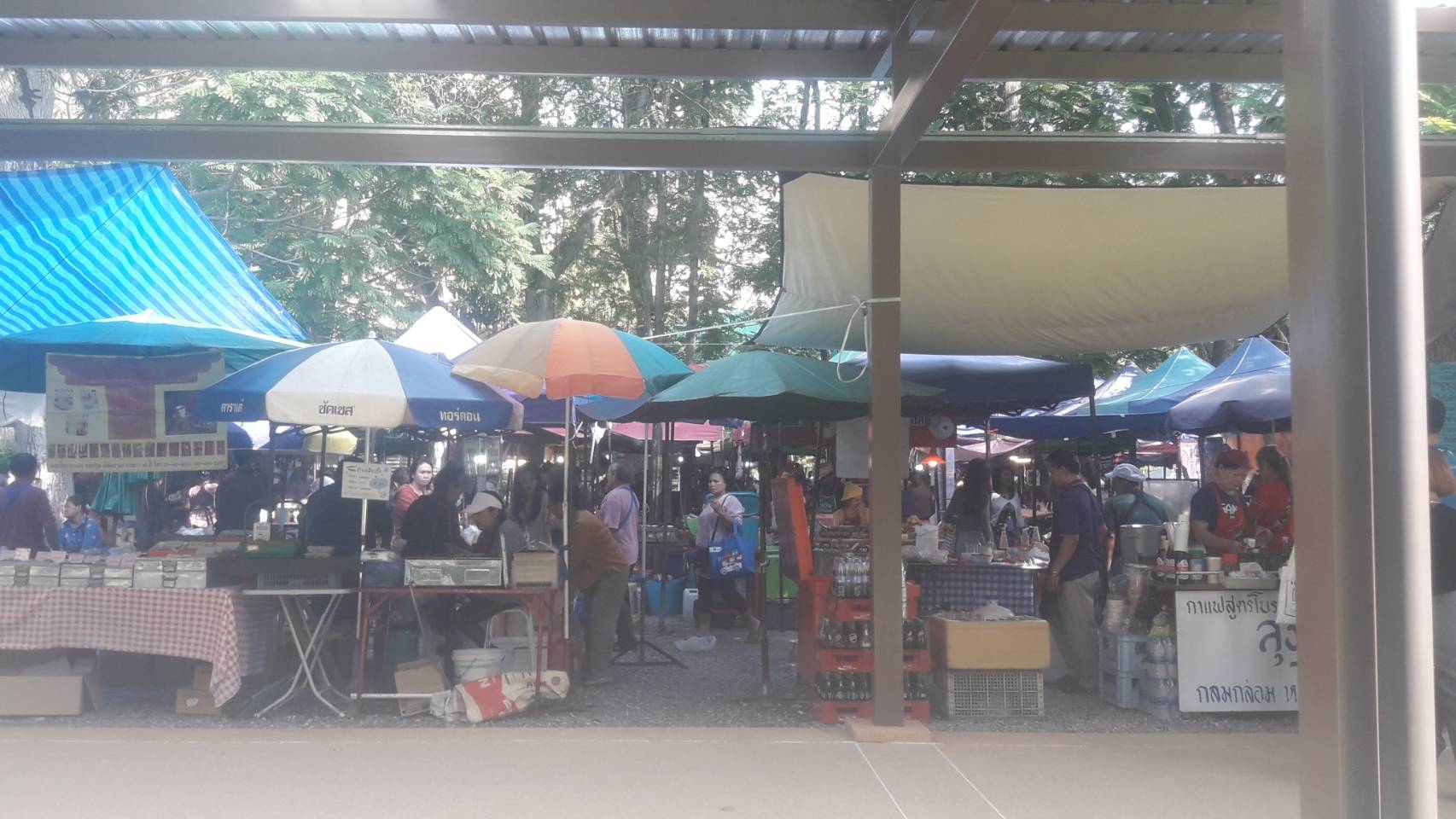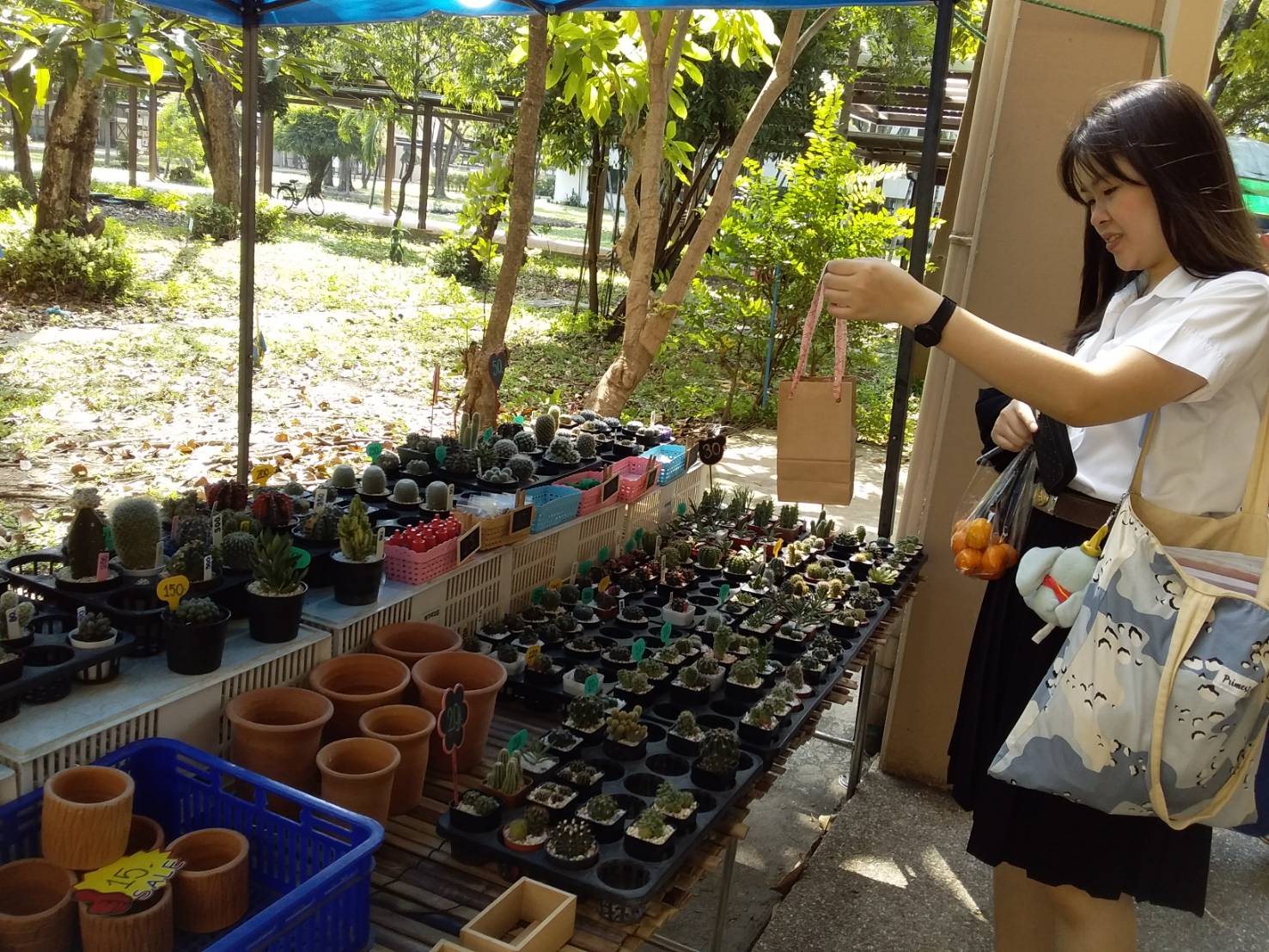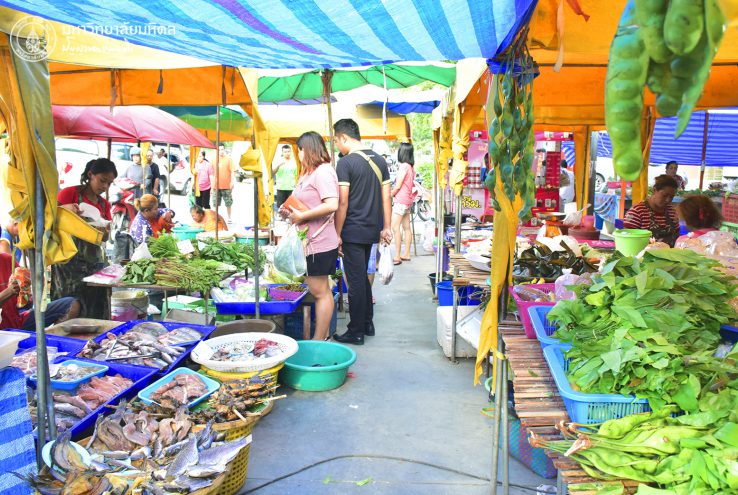The Green Market is an activity that allows the Mahidol University community to come together and provide students with the chance to gain experience in environmental management. This includes reducing waste, disposing of waste in an eco-friendly manner, and establishing relationships with internal agencies, external communities, the public sector, and the private sector. The green market has become a recognizable identity, with people who use its services wanting to come back and recommending it to others. This helps to raise awareness of Mahidol University and its services.
The Green Market Fair Project, a friendly and environmentally friendly project of the Faculty of Environment and Resources Studies
Significance
The Green Market Project has been running since 2535. It is a market that has been created through collaboration between the Faculty of Environment and Resources Studies and the merchants, around the university and the neighboring provinces. It serves as a selling place for consumable goods for personnel in the area, and later turned into a center for selling vegetables, fruits, and other organic products free of toxic substances from both the university community and nearby provinces. It is also an area for relaxation and social gathering, along with the development of a source of goods for farmers around the area. It is also a place for farmers who cannot take their produce out of the area to sell to consumers due to prices being pushed down by middlemen. From the previous market place events, it was found that vendors and buyers used plastic bags and foam boxes for packaging products and food containers, resulting in an increase of non-degradable waste, and a problem with maintaining cleanliness. Therefore, the faculty management has decided to appoint a Green Market project advisor, with a committee of faculty members and staff to support the funding and location, while students of the faculty join the project to reduce the use of plastic bags and foam boxes, replacing them with reusable bags and separating and disposing of waste properly. The project also includes demonstrations of composting, and meetings to educate vendors and buyers on the matter, bringing together faculty management, faculty members, staff, vendors, and buyers to cooperate in this project.
Objectives
1. To encourage vendors and buyers of the market to reduce the use of plastic bags and prohibit the use of foam containers for food packaging, emphasizing the use of natural materials.
2. To encourage sellers and buyers to understand and have a positive attitude towards reducing resource consumption and waste.
3. To support waste management by correctly separating and recycling waste to reduce the problem of landfills and pollution from waste burning.
4. To be an exemplary environmentally friendly market fair.
Operation
1. Meeting and presenting the project proposal to discuss the objectives and goals of the project.
2. Surveying the types of waste found in the market and survey the types of packaging.
3. Publicize the project.
Result of Operation
1. There was a campaign to use fabric bags and packaging made from natural materials.
2. The number of vendors who used natural material packaging is increasing.
3. The number of consumers using cloth bags is increasing.
4. There are more bins available to facilitate the separation of different types of waste.
Users, agencies, communities, etc. Impacts
1. The Faculty of Environment and Resource Studies Mahidol University has fulfilled its mission to educate students and the public by transferring knowledge and has also acted as a source of support for local farmers in the area, who are struggling due to low market prices for their vegetables and fruits.
2. The faculty, students, and staff have been instrumental in educating the public on the importance of conserving resources and reducing waste. Through their efforts, they have provided cloth bags and other eco-friendly packaging to vendors and shoppers so they can take part in the campaign.
3. Retailers are working together to reduce the reliance on plastic bags and excess waste by using more environmentally friendly packaging.
4. Most buyers are in agreement to do their part in conserving resources and cutting down on waste by choosing to purchase products that are packaged with sustainable materials.
- Faculty executives
- Teaching staff
- Welfare Committee
- Student Club
- Faculty personnel
- Students
- Network of sellers/buyers
- MUIC
- Municipal Council of Salaya/Klong Yong Community/Chong Thonom Community/Sala Din Community/Sala Niwet Community/Lam Phya Community


